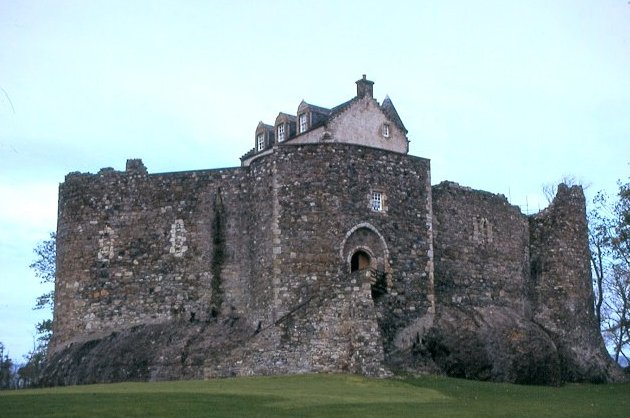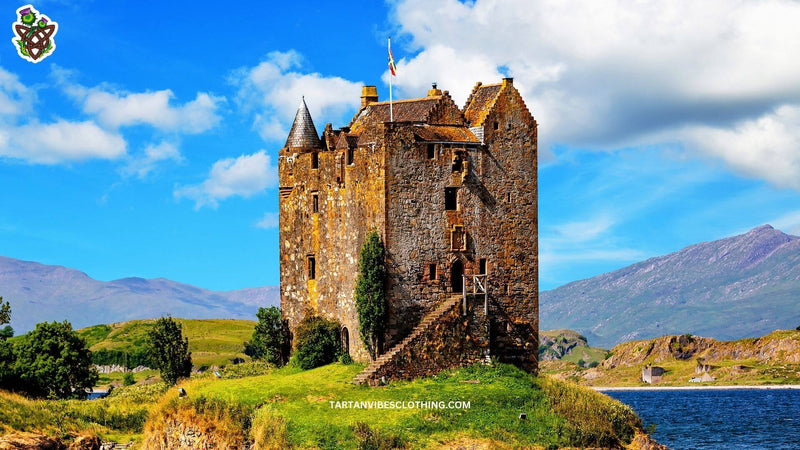Uncover Clan MacDougall Places Rich in History and Heritage
by Aimee Li on Aug 02, 2024
Table of Content
I. Introduction
Clan MacDougall, steeped in the rugged history of Scotland, stands as a testament to resilience and grit. Originating from the ancient Gaelic kingdom of Dalriada, their storied lineage traces back to the 12th century when they emerged as prominent figures in the tumultuous landscape of medieval Scotland. Renowned for their martial prowess and strategic insight, the MacDougalls wielded significant influence along the western seaboard, carving out a domain amidst fierce rivalries and shifting alliances. Today, their legacy endures through a rich tapestry of traditions, symbols, and a deep-rooted connection to the rugged landscapes they once called home.
This article delves into the key Clan MacDougall Places that have shaped the clan's rich heritage and highlights the enduring landmarks that continue to celebrate their contributions to Scottish culture.
1. An Overview of Clan MacDougall
Clan MacDougall, originating from Argyll, Scotland, in the 12th century, is renowned for its courage, lineage, and customs. Descended from Somerled and connected to Clan Donald through ancestral ties, they were prominent as Lords of Argyll and Lorne in the 13th century.

Their alliance with Clan Comyn during the Wars of Scottish Independence led to conflicts with Robert the Bruce, diminishing their influence and paving the way for Clan Donald and Clan Campbell. Despite this, Dunollie Castle is a testament to their enduring cultural legacy, with descendants proudly upholding the MacDougall name today.
2. The Origin of Clan MacDougall
The name of Clan MacDougall is derived from Dougall, the offspring of Somerled. Following Somerled's death in 1164, Dougall assumed control over many Argyll and various islands, such as Mull, Lismore, Jura, Tiree, and Coll. The Gaelic name Dougall, or Dugald, originates from the phrase "dubh-gall," which means "black stranger." The King of Norway recognized Dougall as the 'King of the South Isles and Lord of Lorne.' In 1230, his son, Óspakr-Hákon, was designated as King of the Isles by the Norwegian monarch Hákon Hákonarson.

Duncan, the son of Dougall, had a child named Ewan, and they collaborated to construct several castles, including Dunstaffnage, Dunollie, and Duntrune on the mainland and Aros, Cairnburgh, Dunchonnel, and Coeffin on the islands. Dunollie Castle has been fortified since the 6th century and served as the main residence for Clan MacDougall. Additionally, Duncan established Ardchattan Priory, which became the burial site for MacDougall chiefs until 1737.
⚡ Learn more about the history of Clan MacDougall at Explore Clan MacDougall History: Legends and Ancestral Tales
II. Clan MacDougall Places: Key Locations Associated with Clan MacDougall
1. Dunollie Castle
Dunollie Castle, located near Oban in Argyll, features the remnants of a strong yet dilapidated tower along with other structures that are now overgrown. The site has been fortified since the era of the Dál Riata kings during the sixth and seventh centuries. Lorn's MacDougall clan constructed the current castle. The Brooch of Lorn, reportedly taken from Robert the Bruce by the MacDougalls, was housed at Dunollie Castle. In 1644, the castle came under attack from Argyll, the leader of Clan Campbell.

In 1647, it was besieged by a Covenanter army led by General David Leslie, resulting in the castle being looted and set ablaze. During the Jacobite uprising of 1715, the castle faced further assault when the MacDougalls aligned with the Clan Stewarts, losing their lands. However, these lands were returned to them in 1745. In 1746, the MacDougalls constructed Dunollie House nearby. However, an earlier residence had existed there since around 1600, marking the abandonment of the old castle. The castle is currently in a dangerous state but remains in the possession of the Clan MacDougall.
2. Dunstaffnage Castle
Dunstaffnage Castle, located three and a half miles north-east of Oban in Argyll, is a sizable courtyard fortress featuring a tall curtain wall and a later addition of a gatehouse range. The rulers of Dál Riata also had significant control over this location. It is believed that the Stone of Scone (also known as the Stone of Destiny) was once housed in the castle. The MacDougalls constructed the current structure. It was besieged by Robert the Bruce following the MacDougalls' defeat at the Battle of the Pass of Brander in 1309.

After this event, Bruce turned the castle into a royal residence, and the Clan Campbells were appointed as its guardians. Additionally, a nearby chapel dates back to the thirteenth century. Presently, the castle is managed by Historic Scotland.
3. Gylen Castle
Gylen Castle, located on Kerrera's southern coast, is a modest tower house historically belonging to the MacDougall Clan. A previous castle at this location is believed to be where Alexander II of Scotland might have passed away while trying to reclaim the Western Isles in the mid-1200s. The current structure was finished by Duncan MacDougall in 1582.

Nevertheless, it was set ablaze (along with Dunollie Castle) by the Covenanters led by General David Leslie in 1647.
4. Cairnburgh Castle
Cairnburgh Castle, situated on the Treshnish Isles to the northwest of Mull, is a dilapidated fortress that was once owned by the MacDougalls and came under Crown control with the MacDougalls as its stewards in 1309. Little is known about its early history, but it was recorded as being in Ewan MacDougall's possession in 1249.
Reports suggest the castle occupied a strategically advantageous location, making it difficult to supply. It is thought to have been taken by Bruce and later played a significant role in the history of the Clan MacLean.

5. Duart Castle

Duart Castle, located on the Isle of Mull, is a historic structure that has captured the imagination of many. The MacDougall clan is believed to have constructed the castle during the 13th century when feudal lords established their strongholds across Scotland.

Later, in the 14th century, the castle changed hands and became the property of the MacLean clan, who would play a significant role in its history.
6. Mingary Castle

Mingary Castle is located in the picturesque region of Lochaber. The MacDougall clan is believed to have constructed this remarkable fortress during the 13th century. This timeframe suggests that the castle represents the clan's expanding influence and authority, which began to spread northward starting in the 12th century.
7. Aros Castle
Aros Castle, located on the picturesque Sound of Mull, is another historic structure that dates back to the 12th century. This castle was seized by Robert the Bruce for the Crown approximately two centuries later. Following this acquisition, ownership of the castle was transferred several times; it first passed from the MacDonald clan to the Clan Maclean and ultimately came into the possession of the Clan Campbell.

Unfortunately, during the late 17th century, the Clan Campbell neglected the castle, leading to its gradual deterioration and ruin.
8. Castle Stalker

9. Ardchattan Priory

Ardchattan Priory, located approximately six miles north of the town of Oban, was established in 1230 by a man named Duncan MacDougall. Today, this historical site exists in a state of ruin, serving as a notable landmark that once held significant importance. It also became the final resting place for the chiefs of the MacDougall clan until the year 1737, marking its relevance in the region's history and heritage.
10. Dunchonnel Castle & Coeffin Castle

Dunchonnel Castle, located on the Garvellach Isles, and Coeffin Castle, located on the Isle of Lismore, are dilapidated fortifications that used to be under the MacDougall clan's control. Historically significant, both Dunchonnel and Coeffin Castles were seized by Robert the Bruce during his campaigns.
III. Conclusion
Frequently Asked Questions
Where did the MacDougall clan live?
Argyll
Clan MacDougall is a Highland Scottish clan, historically based in and around Argyll.
Who is the chief of the McDougall clan?
Madam Morag MacDougall of MacDougall, the 31st chief of the clan.
What is the MacDougall family crest?
The MacDougall Clan Crest features an armored arm holding a cross. The MacDougall Clan Motto is Buaidh No Bas (Conquer or die).
What is the history of the MacDougall tartan?
The Dress MacDougall tartan is derived from the initial design and was probably created for the first time around 1970. In 2010, an important historical tartan was found at Dunollie House. This tartan dates back to the early 1700s, predating clan-specific tartans, and was likely made to signify a particular area.







